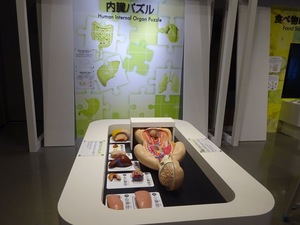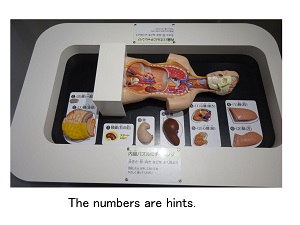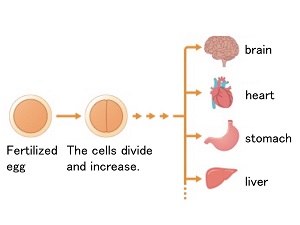Nagoya City Science Museum
TOP > Exhibition Guide > Floor Map> Human Internal Organ Puzzle
Human Internal Organ Puzzle



Purpose of Exhibition
This is a three-dimensional puzzle that enables users to disassemble some parts of a human internal organ model and assemble them again.
Try this puzzle, and you will understand that many organs are compactly housed in the human body. There are nine removable pieces from six types of organs:
1. Kidney (front part of the right kidney)
2. Intestines (part and the whole)
3. Stomach
4. Liver
5. Heart (front and back)
6. Lungs (right and left)
As a clue, the number and shape of each organ piece are shown in the body areas in which they are placed. Put these pieces in numerical order and according to the shape indicated.
Once you finish assembling the internal organ pieces, please put them back where they were.
Additional Knowledge
[Why do organs remain fixed in the body?]
Unlike those in the model, individual organs in the body are covered with a strong film, which prevents them from moving to a wrong position or direction, being twisted, or being rubbed.
Imagine that you are packing for your trip. You organize your stuff by type (underclothing, toiletries, etc.) and put them into small packets before putting them in your luggage, so that all the stuff can be easily packed and unpacked. The organs in the body are very similar to that.
[How are the shape and role of each organ developed?]
The human body starts as a fertilized egg. The fertilized egg undergoes repeated cell divisions, through which the functions of cells get variety. As the process advances, the number of cells also increases at a controlled speed to attain proper size and shape as each organ, although this mechanism has not been fully explained yet.
Article and illustrations by Tomoko Horiuchi, curator
